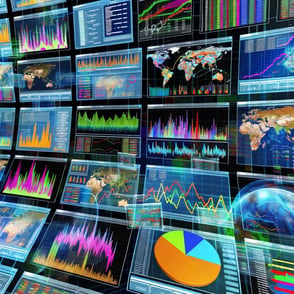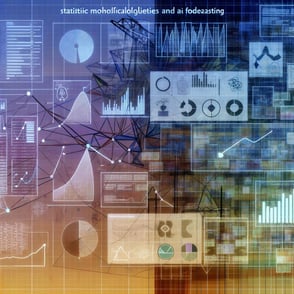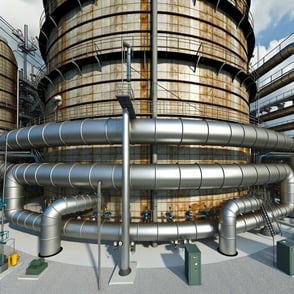Transmission Lines
Transmission lines are high-voltage power lines that transport electricity from power plants to substations over long distances, ensuring efficient delivery.
What are Transmission Lines?
Transmission lines are high-voltage power lines that transport electricity from power generation plants to substations, where the voltage is lowered for distribution to homes, businesses, and industries. These lines are a critical component of the electrical grid, ensuring the efficient and reliable delivery of electricity over long distances. By connecting power plants to the broader grid, transmission lines play a vital role in maintaining the stability and balance of the electricity supply.
How Transmission Lines Work
Transmission lines operate by carrying high-voltage electricity across vast distances. The process begins at power generation stations, where electricity is produced at relatively low voltages. This electricity is then stepped up to high voltages by transformers to reduce energy loss during transmission. High-voltage electricity is more efficient for long-distance transmission because it minimizes the current flowing through the lines, which in turn reduces resistive losses.
The high-voltage electricity is transmitted through a network of transmission lines, which can be either overhead lines or underground cables. Overhead transmission lines are the most common and are typically supported by towers or poles made of steel or reinforced concrete. These lines are insulated from the supporting structures to prevent electrical faults. Underground cables, though less common due to higher costs, are used in urban areas or environmentally sensitive locations where overhead lines are impractical.
Transmission lines are categorized into different voltage levels, typically ranging from 69 kV (kilovolts) to 765 kV or higher. The voltage level depends on the distance of transmission and the amount of power to be transported. High-voltage direct current (HVDC) transmission lines are also used for very long distances or undersea cables, as they are more efficient and have lower energy losses compared to alternating current (AC) lines for specific applications.
At the receiving end, the high-voltage electricity is stepped down to lower voltages by transformers at substations. This lower-voltage electricity is then distributed through distribution lines to end-users. This entire process ensures that electricity generated at power plants is efficiently delivered to distributers with minimal energy loss.
The Impact of Transmission Lines on the Energy Sector
Transmission lines have a profound impact on the energy sector by enabling the efficient and reliable delivery of electricity over long distances. Their ability to transport high-voltage electricity minimizes energy losses and ensures that power generated at remote locations can reach consumers in urban and industrial areas.
Transmission lines play a crucial role in minimizing energy loss during the transportation of electricity. By carrying high-voltage electricity, these lines reduce resistive losses, ensuring that more of the generated power reaches end-users. This efficiency is vital for maintaining the reliability and stability of the electrical grid.
As the use of renewable energy sources such as wind and solar power grows, transmission lines are essential for integrating these variable energy sources into the grid. Many renewable energy projects are located in remote areas with abundant natural resources. Transmission lines connect these projects to the broader grid, enabling the delivery of clean energy to consumers. Transmission lines further contribute to the reduction of greenhouse gas emissions by enabling the efficient delivery of renewable energy. By connecting renewable energy projects to the existing grid, transmission lines help reduce the reliance on fossil fuels and promote a cleaner energy future.
Conclusion
Transmission lines are indispensable components of modern electrical grids, enabling the efficient and reliable transmission of electricity over long distances. By carrying high-voltage electricity from power generation plants to substations, transmission lines ensure that electricity can be delivered to consumers with minimal energy loss. Their role in supporting the integration of renewable energy sources and enhancing the efficiency of power systems makes them crucial for the transition to a more sustainable energy future.
Glossary
- Transmission Line: High-voltage power lines that transport electricity from power generation plants to substations.
- High-Voltage Direct Current (HVDC): A type of transmission line that uses direct current for long-distance electricity transmission, offering lower energy losses.
- Alternating Current (AC): An electric current that reverses its direction periodically, commonly used in power systems.
- Transformer: An electrical device that increases or decreases the voltage of electricity for efficient transmission and distribution.
- Overhead Transmission Line: High-voltage power lines supported by towers or poles, used for long-distance electricity transmission.
- Underground Transmission Cable: High-voltage cables buried underground, used in urban areas or environmentally sensitive locations.
- Substation: A facility that steps down high-voltage electricity from transmission lines to lower voltages for distribution to consumers.
- Kilovolt (kV): A unit of electrical potential equal to 1,000 volts.
- Renewable Energy: Energy generated from natural resources that are replenished continuously, such as wind, solar, and hydropower.
- Grid: An interconnected network for delivering electricity from producers to consumers.
.png?width=200&height=80&name=etpa-logo-color%20(1).png)































.png)
.png)
-1.png?width=250&height=100&name=etpa-logo-color%20(1)-1.png)